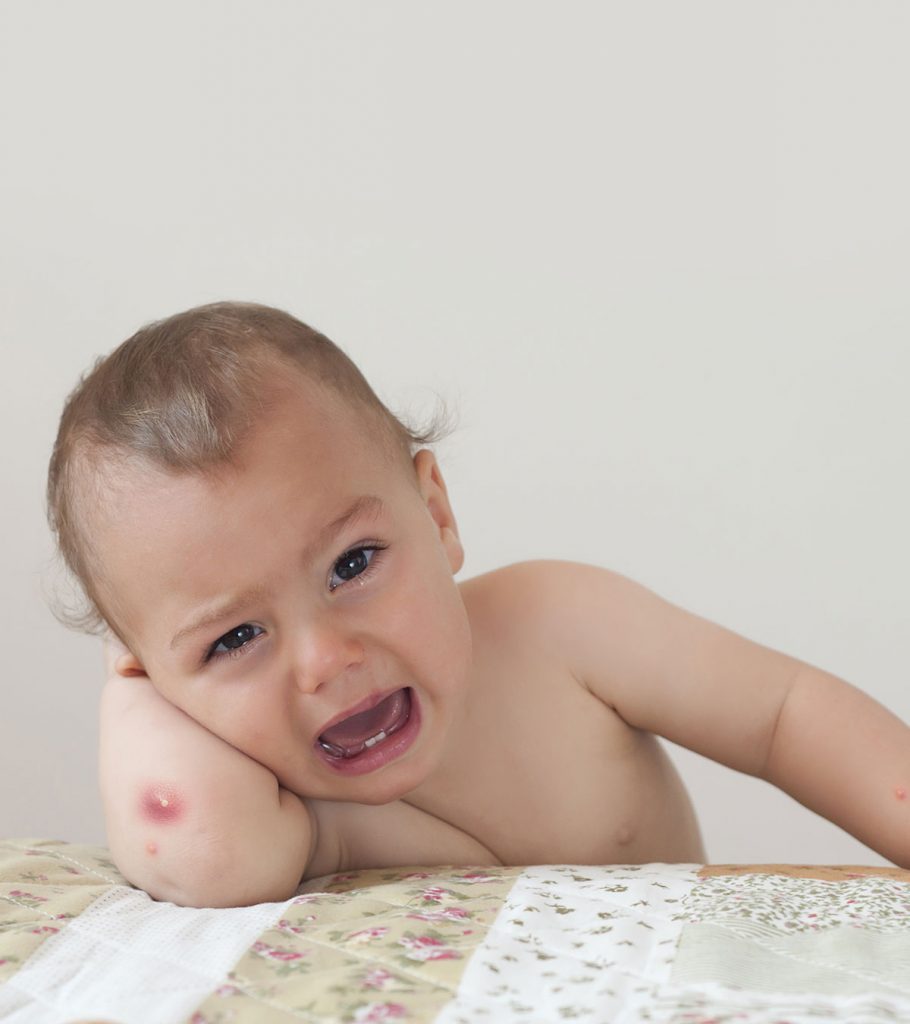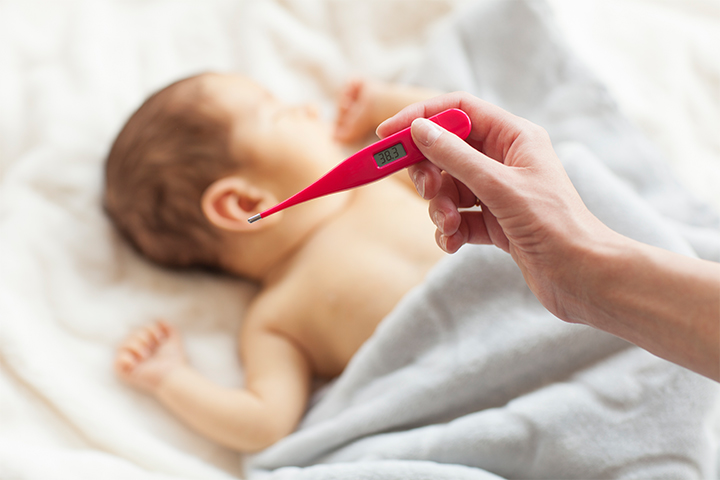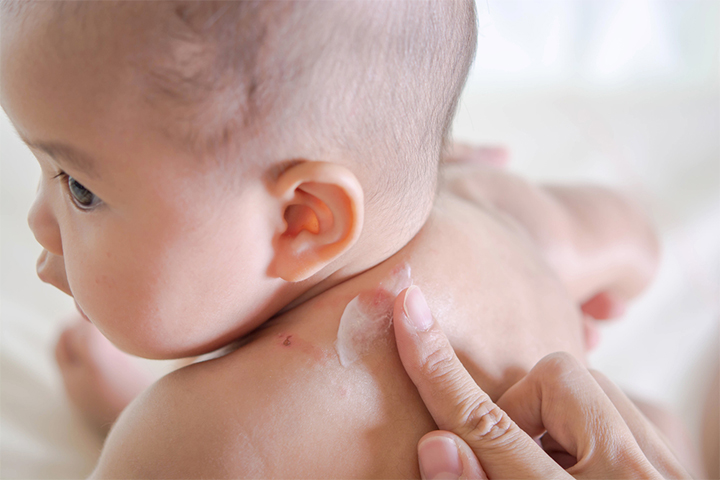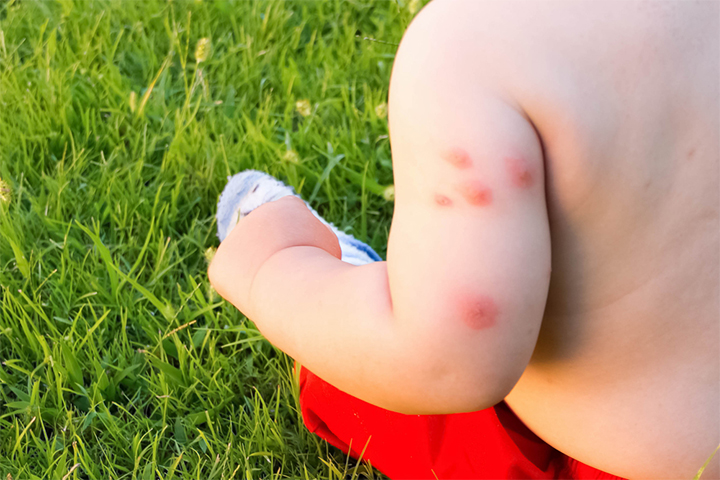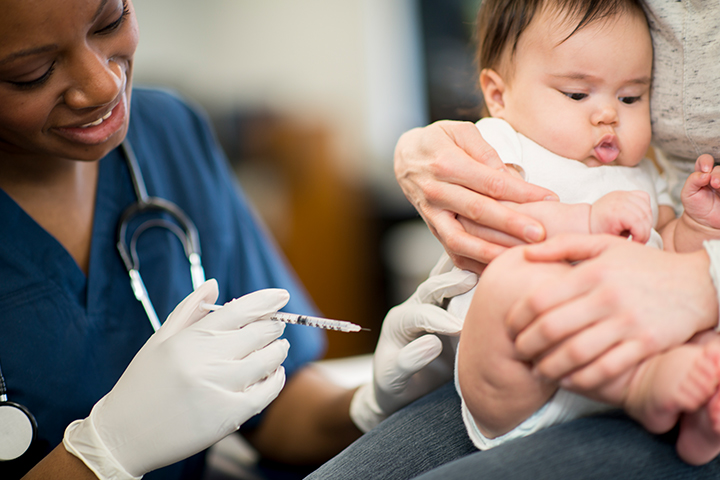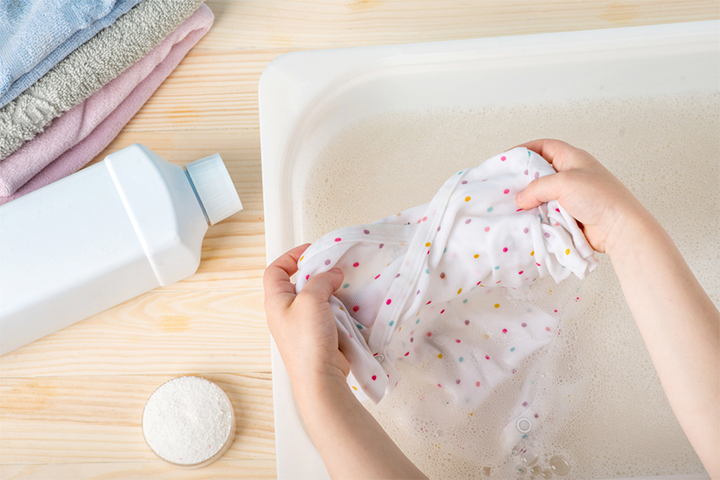Boils on babies may resolve without interventions or simple home remedies. However, it is recommended to seek pediatric care if the boils are not cured within a few days. These are also called furuncles, an infection of hair follicles deep in the skin due to bacteria or fungi and a type of folliculitis (1).Staphylococcus aureus is the most common causative agent; usually, the infection may begin with scratches or insect bites on the skin. These are painful red nodules filled with pus (2). Immediate medical attention is needed for recurrent boils or those growing in size (3).
Read on to learn more about the causes, symptoms, and treatments for boils on babies.
Are Boils Common In Babies?
Boils most commonly appear in teenagers or young adults. Although not very common, they may be observed in babies. A boil can develop in healthy infants, but babies with weakened immune systems, existing skin infections, as well as frequent insects bites insects are at a higher risk (4).
Where Do Boils Appear On The Body?
Babies can get boils anywhere on the body since boils can spread from one part of the body to another. The most common areas for boils to occur are places where there is friction and/or places that tend to be sweaty, such as face, neck, shoulders, thighs, armpits, and buttocks (4).
It is essential to know the symptoms to differentiate boils from other skin conditions.
Symptoms Of Boils In Babies
A boil clinically present as red, swollen, painful and tender nodules of varying size and at times with an overlying pustule.(5). You may notice other symptoms as the boil grows larger (6).
- The appearance of a white or yellow head on the inflamed area
- Increasing size and soreness of the lump
- Increasing pain
- Fever and chills (rare)
- Inflammation of the nearby lymph nodes (rare)
The baby could display more symptoms depending on the cause of the boils.
When To See A Doctor?
In most cases, boils heal within two weeks. However, it is good to consult a doctor when you notice the following conditions (7) (6) (8).
- A boil is increasing in size or in number.
- Several furuncles form a cluster or carbuncle, causing a condition called carbunculosis.
- It has become large and painful, making your baby feel uncomfortable.
- Fever of more than 100°F (37.7°C).
- Redness of the skin around the boil with uncontrollable itching.
- Recurrent boils at the same spot or other parts of the body.
- Boil appearing on the face or spine.
If a boil bursts, you also might seek medical advice.
Home Remedies For Boils In Babies
When a boil first appears, the pus-filled cavity (abscess) is absent. In this phase, doctors might recommend the following home remedies (9).
- Warm and moist compresses: You may apply a warm and moist compress to the boil for 20 to 30 minutes, three to four times a day. This could make the boil drain. Once the boil is drained, cover the boil with a clean, antiseptic bandage to protect the infection from spreading.
- Ointment: If the boil does not drain out with warm compresses, then try using topical creams or ointments that draw (pull) the pus out of the boil. This type of ointment is referred to as “drawing salve.” It typically contains a drug called ammonium bituminosulfonate, also known as Ichthyol which causes the surface of the boil to break.
- Washing the infected area: Affected areas must be washed with an antibacterial soap. Wash your hands before and after washing the boil to prevent the spread of the boil to other parts of the baby’s body.
- Alcohol: Disinfect the area by rubbing alcohol, which is entirely harmless for the baby’s skin. Sometimes, this alone might be enough to treat boils that may have been caused by a simple infection.
- Coconut oil: If there are multiple boils on the scalp, it might be because of heat and weather. In this case, apply extra virgin coconut oil on the boils. Extra virgin coconut oil has antibacterial and emollient properties that could potentially help in healing boils (10).
- Honey, porridge, and parsley: Although these home remedies are largely anecdotal, the use of honey, porridge, and parsley may provide symptomatic relief to your baby.
Always consult a doctor before using any home remedy on the baby’s skin.
Causes Of Boils In Babies
Bacteria called Staphylococcus aureus (staph), which is present on the baby’s skin, is the most common cause of boils. It usually does not cause a problem. However, an infection might develop due to the following reasons.
- Spread from an infected person: Boils caused by methicillin-resistant Staphylococcus aureus, or MRSA can spread from an infected person to the baby (2). It is important to note that rather than boil, it is the pus in the boils that is contagious and thus the main cause of the spread of the infection. Understanding the cause of contagiousness can help prevent spread.
- Other skin infections: If your baby has other skin infections, then they are more vulnerable to boils. This happens due to the weakening of the skin barrier often caused by skin problems, such as in eczema (1). The Centers for Disease Control and Prevention reports that approximately 10.4% of children between the ages of zero and five years experience eczema.
- Skin injuries or bug bites: A skin injury or a bug bite can provide a point of entry for bacteria, thus causing boils.
- Broken boils: Broken boils can cause the spread of pus from one part of the body to another. It can lead to the spread of boils to unaffected parts of the body (5).
- Poor hygiene: Poor infant hygiene can cause the deposition of sweat and dead skin cells within natural skin creases and crevices. It becomes a hospitable place for infection-causing bacteria, thus leading to boils (3).
- Skin friction: Tight-fitting clothes result in friction with skin and also poor skin ventilation. It can make the skin a breeding ground for bacteria and lead to boils (11).
Diagnosis Of Boils In Babies
A timely diagnosis of the cause can help prevent discomfort to the baby. Following is the possible course of diagnosis that your doctor would follow (12).
- Health history: This is the preliminary step of diagnosis. The doctor will check the symptoms and know the baby’s health history.
- Physical examination: The boil is examined to assess its severity.
- Culture: This method of diagnosis might be used in moderate to severe cases of boils by collecting a sample of the pus for microbiological analysis and determination of the type of bacteria.
- Blood tests: Blood tests may be done in severe cases, associated with systemic signs of infection or in recurring boils (9).
The diagnosis of the underlying cause determines the course of treatment for the boils.
Treatment For Boils In Babies
Sometimes boils get better on their own or with the help of a home remedy. But if they do not, the following treatment could be prescribed (5).
1. Incision and drainage
It is the standard treatment for large boils. The doctor gives local anesthesia or uses a cooling agent to numb the area and gently slits the boil. Then, cotton gauze is used to compress and extract the pus out of the boil. The wound is not stitched but covered with an antibiotic plaster to promote healing.
The entire process is performed as a minor surgery at an outpatient clinic, and you can take the baby home after the procedure. The doctor may ask you to return the next day or a few days later to change the dressing and inspect the progress of healing.
2. Systemic antibiotics therapy
In this process, antibiotics are administered through an intravenous drip or injection. Antibiotics help combat the bacteria that led to the infection in the first place, thus ultimately leading to relief from boils. This mode of treatment is usually used in cases of severe boils that can cause complications and thus cannot be drained.
3. Keeping still
Another treatment for boils is “keeping still,” which is considered when the boil is on the face in order to minimize the risk of spreading the bacteria through the bloodstream. In this method, the affected part of the skin is kept as still as possible and not touched. However, this method can be difficult to implement in babies since they are active, and it is hard to teach them to stay still or not touch a part of the face.
If your baby has secondary symptoms, such as fever, then the doctor will prescribe relevant medications.
Complication Of Boils In Babies
Prompt treatment can not only treat and heal boils but can also prevent some complications, such as those mentioned below.
- Scarring: Large boils might cause scarring. Generally, the scar fades over a period, but may not disappear completely.
- Spread of infection: Once a baby is infected, it is usually recommended to be careful about its spread. The bacteria inside a boil could spread to other parts of the body. This can potentially initiate a secondary infection such as cellulitis, which is a common benign secondary infection.
- Cavernous sinus thrombosis: is a very rare complication of boils. It usually occurs when an infection initiates the development of a blood clot in the spaces behind the eye socket and causes increased brain pressure. . The symptoms include sharp and severe headaches, swelling of the eyes, and severe eye pain. This condition is life-threatening if not treated with antibiotics in a timely way.
Complications arising from boils are rare and mostly occur when severe boils are ignored and not provided medical attention. They can be prevented through simple precautionary measures.
Prevention of Boils In Babies
Here are some simple steps to prevent boils (13).
- Maintain hygiene Washing hands is key to preventing Staph skin infections. Have everyone in the home wash their hands often. Use a liquid antibacterial soap or alcohol hand sanitizer for sterilization. Avoid nose picking. People have Staph bacteria in their nose.
- Look for symptoms of boils, and as soon as you notice any, take prompt action.
- If your baby has developed a boil, clean it carefully, and avoid the spread of the infection.
- Wash your baby’s clothes and towels after each use, in an antibacterial solution to avoid the spread of any existing skin infection to healthy skin.
- If your baby has an existing boil, then see to it that your baby does not rub, squeeze, or poke the boil.
- If the baby has been treated, keep the wound cleaned and covered with sterilized gauze until it heals.
Boils on babies are characterized by red, swollen, painful, and sensitive nodules of varied sizes and an underlying pustule in certain cases. Usually, babies recover from boils within two weeks. However, if you have observed serious symptoms for which treatment is suggested, you must follow the method on newborns exactly as advised to avoid complications. Several home treatments, like warm and moist compressions, may be beneficial in the early stages. Moreover, maintaining hygiene, washing the baby’s clothing and towels after usage, cleaning and concealing the wound, and other preventative measures may be effective.
Key Pointers
- Boils, also called furuncles, are infections of the hair follicles caused by bacteria or fungi. They occur in areas with hair such as the face, neck, armpits, and buttocks.
- Infants with a weakened immune system, existing skin infections, and frequent insect bites are highly susceptible to boils, although they can also develop in healthy babies.
- Symptoms range from a white or yellow head on an inflamed area to high fever, pain, and swelling.
- Home remedies can help with the healing process: Apply a warm compress to drain out the boil; use an ointment if the compress does not help; apply alcohol and keep the infected area clean.
- Large boils are treated by incision and drainage. An antibiotic dosage is prescribed to clear the infection and relieve the symptoms.
- It is important to maintain utmost hygiene to prevent boils. Wash your baby’s towels and clothes after every use, and look out for early signs of symptoms. If the baby has been treated, keep the wound clean and sterilized.
Boils can appear anywhere on a child’s body, causing pain and itchiness. Learn how long it takes for a boil to heal and get tips on how to help your baby feel better and speed up the healing process.
